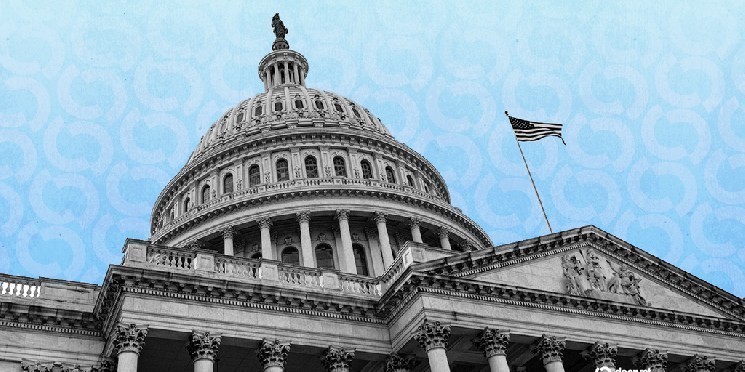Republicans Unveil Principles for Crypto Market Structure
The world of digital assets is in a state of constant evolution, bringing with it an urgent and profound need for clear, comprehensive regulation. For an extended period, the cryptocurrency industry within the United States has functioned under a fragmented collection of outdated rules, fostering pervasive uncertainty and significantly impeding innovation. However, a crucial development is now on the horizon, promising to introduce much-needed clarity to the intricate crypto market structure.
In a move signaling a serious dedication to establishing a robust framework for the digital economy, a collective of influential Senate Republicans has meticulously outlined a set of key principles for forthcoming legislation. This charge is being led by Senators Tim Scott, Cynthia Lummis, Bill Hagerty, and Thom Tillis, whose objective is to provide a precise roadmap for how digital assets will be governed across the U.S. This initiative represents a critical step toward cultivating a secure and innovative environment for all participants within the expansive crypto space.
The persistent absence of clear U.S. crypto regulation has frequently been identified as a significant barrier to broader institutional adoption and the development of widespread public trust. Companies have struggled immensely to navigate the often-conflicting guidelines issued by various regulatory agencies, while investors have faced considerable uncertainty regarding asset classifications and essential consumer protections. This new proposed framework endeavors to address these long-standing issues directly, aiming to establish a more predictable and equitable playing field for all.
The principles articulated by these Senate Republicans, recognized as ardent champions of crypto, are strategically designed to confront the most pressing regulatory challenges currently facing the industry. While the full draft of the bill is still highly anticipated, as noted by Crypto in America host Eleanor Terrett, these outlined principles offer a robust indication of their overarching legislative intent. Let’s delve into each of these foundational pillars:
Clarifying the Legal Status of Digital Assets: One of the most contentious issues within the crypto sphere is the appropriate classification of a digital asset – specifically, whether it should be deemed a security or a commodity. This critical distinction carries profound implications for determining which regulatory body, such as the SEC or CFTC, holds jurisdiction. The new framework aims to furnish clear, unambiguous definitions, thereby significantly reducing ambiguity and fostering greater legal certainty for both developers and investors.
Enhancing Regulatory Accountability: The proposed principles are designed to ensure that regulators are held explicitly accountable for their actions and decisions within the digital asset space. This entails establishing transparent processes and clear mandates for agencies overseeing the sector, a measure intended to prevent arbitrary enforcement practices and promote the consistent application of rules across the board.
Modernizing Outdated Rules: It is widely acknowledged that current financial regulations were not originally conceived with the complexities of blockchain technology in mind. This legislative initiative seeks to comprehensively update existing laws and, where necessary, create entirely new ones that are fit for purpose, recognizing the unique characteristics inherent in digital assets and their underlying technological infrastructure.
Protecting Trader Rights: Safeguarding the interests of investors and users is an objective of paramount importance. The framework places a strong emphasis on establishing robust protections for individuals actively participating in the crypto market. This includes implementing clear and comprehensive disclosure requirements, instituting stringent fraud prevention measures, and creating effective mechanisms for redress in cases of dispute or harm.
Strengthening Anti-Money Laundering (AML) Measures: Ensuring the unwavering integrity of the broader financial system remains a core objective. The principles advocate for the implementation of robust Anti-Money Laundering (AML) and Counter-Terrorist Financing (CTF) measures throughout the digital asset ecosystem. This commitment aims to align U.S. regulations with international standards and to safeguard national security interests.
Ensuring Clear Guidance from Regulators: The digital asset industry thrives on predictability and clarity. The framework specifically calls for regulators to provide unambiguous and timely guidance to market participants. This crucial step is intended to empower businesses to innovate and operate with confidence, rather than being constantly hampered by the fear of sudden, unpredictable policy shifts.
The urgency surrounding comprehensive digital asset legislation cannot be overstated. The United States possesses immense potential to emerge as a global leader in blockchain innovation; however, a persistent lack of regulatory clarity has regrettably often pushed valuable talent and crucial capital overseas. The establishment of clear and consistent rules will not only provide essential protection for consumers but will also unlock significant and expansive economic opportunities. These benefits include boosted innovation within a predictable regulatory environment, increased investor confidence due to clear rules on asset classification and consumer protection, enhanced market integrity through the elimination of illicit activities, and improved global competitiveness, positioning the U.S. as an attractive hub for crypto businesses.
Nevertheless, the intricate process of crafting such pivotal legislation is not without its inherent challenges. The bipartisan nature of any successful bill will be absolutely critical, demanding a spirit of compromise and a profound understanding of complex technological concepts from lawmakers across the political spectrum. Achieving the delicate balance between fostering innovation, providing robust investor protection, and addressing national security concerns is indeed a challenging act.
These meticulously outlined principles represent a significant and forward-looking step in shaping the future of blockchain policy within the United States. While the complete legislative text is still eagerly awaited, the collaborative bipartisan effort, particularly involving influential senators like Cynthia Lummis who has consistently been a vocal proponent of sensible crypto regulation, offers a genuine glimmer of hope for the industry. The concentrated focus on foundational issues such as legal clarity and regulatory accountability directly addresses precisely what the market has been consistently clamoring for.
The coming months will prove to be critical as the legislative process systematically unfolds. Industry stakeholders, consumer advocacy groups, and leading technology experts are widely expected to engage actively with lawmakers, providing invaluable input to ensure that the final bill is both highly effective and truly forward-thinking. This collaborative and inclusive approach is absolutely essential to create a regulatory framework that genuinely serves the diverse needs of a rapidly evolving digital economy.
For investors, businesses, and developers alike, these outlined principles signal a highly anticipated potential shift from an era of pervasive regulatory uncertainty to a more structured, predictable, and ultimately stable operating environment. A well-defined crypto market structure could pave the way for greater institutional participation, as large financial institutions typically demand clear regulatory guidelines before committing substantial capital to new and emerging asset classes. Furthermore, it could significantly spur new product development, empowering companies to confidently develop and offer innovative crypto-related products and services, ranging from robustly regulated stablecoins to the tokenization of real-world assets. Additionally, it promises a substantial reduction in regulatory risk, as businesses operating within the U.S. will gain a much clearer understanding of what is expected of them, thereby minimizing the likelihood of unexpected and disruptive enforcement actions.
While the journey towards comprehensive legislation is frequently protracted and intricately complex, the release of these principles by influential Senate Republicans is an undeniably positive and impactful development. It clearly underscores a growing and vital recognition within Washington of the profound importance of digital assets and the urgent necessity for a comprehensive regulatory framework that simultaneously champions innovation, diligently safeguards consumers, and steadfastly upholds market integrity.
In conclusion, the official unveiling of these core principles by Senate Republicans marks a truly pivotal moment for the U.S. crypto industry. It signifies a concrete and substantial step towards establishing a much-needed, transparent, and predictable regulatory environment – one that possesses the capacity to vigorously foster innovation, robustly protect investors, and unequivocally solidify America’s preeminent position in the global digital economy. As the complete bill draft eventually emerges, the global crypto community will be observing with intense interest and anticipation, fervently hopeful that these foundational principles will translate into effective and truly forward-thinking digital asset legislation.










